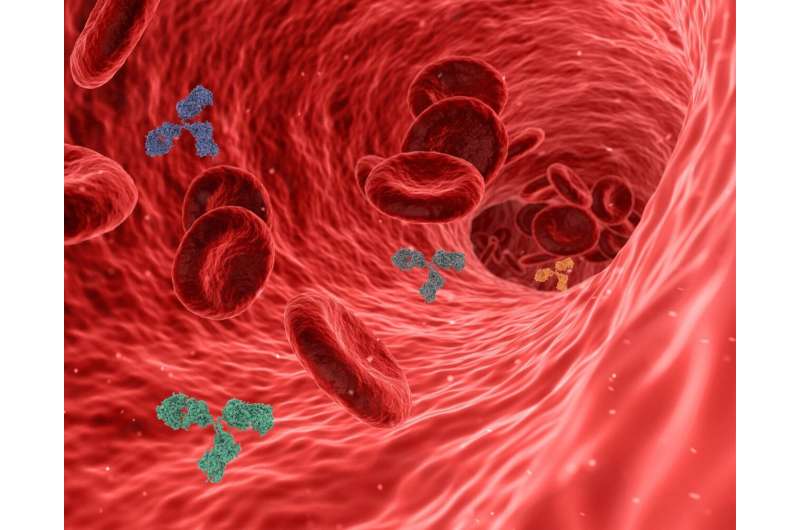This article has been reviewed according to Science X's editorial process and policies. Editors have highlighted the following attributes while ensuring the content's credibility:
fact-checked
peer-reviewed publication
trusted source
proofread
Researchers present novel principle for nitric oxide-mediated signaling in blood vessels

Although a simple molecule, nitric oxide is an important signal substance that helps to reduce blood pressure by relaxing the blood vessels. But how it goes about doing this has long been unclear. Researchers at Karolinska Institutet in Sweden now present an entirely novel principle that challenges the Nobel Prize-winning hypothesis that the substance signals in its gaseous form. Their findings are presented in the journal Nature Chemical Biology.
That the simple molecule nitric oxide or nitrogen monoxide (NO) serves as a signal substance in many important physiological processes has been known for some time. For example, the discovery of the compound's significance was awarded the 1998 Nobel Prize in Physiology or Medicine. One of its functions is to initiate a signaling cascade that causes the smooth muscles of the vasculature to relax, thus expanding the vessels and lowering blood pressure. This is also why nitroglycerin, which releases NO, has long been a common treatment for angina.
However, the results now presented surprisingly indicate that it is not the NO molecule per se that is the active partner in the chemical interaction.
Can mean a paradigm shift
"It's a little controversial, something of a paradigm shift in the field, in fact," says Professor Jon Lundberg, who is the main author of the paper together with Andrei Kleschyov and Mattias Carlström, all of whom are at the Department of Physiology and Pharmacology, Karolinska Institutet.
The NO is formed in the endothelium, the tissue that constitutes the inner lining of blood vessels. For almost 40 years, the hypothesis has been that it then diffuses as a gas, spreading out randomly until it encounters an enzyme called guanylyl cyclase in the vascular smooth muscle, upon which the vessel relaxes. It is a journey over a distance of less than a millimeter, but it is a long way for a molecule.
"It's hard to believe that it can work, since NO is so reactive and volatile that it ought to have trouble surviving that journey," says Professor Lundberg.
Since it has also been difficult to demonstrate the presence of free NO in the cells, the actual signaling mechanism has long been a mystery.
A new signal substance
The KI group has tested the hypothesis that NO bonds with a "heme group," a complex surrounding a single iron atom that is found in hemoglobin and that is freely available also in endothelial cells. Together they form a new and much more stable compound: NO-ferroheme.
The researchers found that NO-ferroheme significantly expands the blood vessels of mice and rats, and that in controlled experiments directly activates guanylyl cyclase, thus acting as a signal substance in the signal cascade.
"What we need to do now is establish that the endogenous NO-ferroheme that's formed in endothelial cells really is a true signal substance and ascertain exactly how it gets synthesized in the body," says Professor Lundberg.
Their results can provide a more detailed understanding of the chemical interaction and eventually open the way for new, improved treatments for cardiovascular disease.
More information: Andrei L. Kleschyov, NO-ferroheme is a signaling entity in the vasculature, Nature Chemical Biology (2023). DOI: 10.1038/s41589-023-01411-5 , www.nature.com/articles/s41589-023-01411-5
Journal information: Nature Chemical Biology
Provided by Karolinska Institutet




















